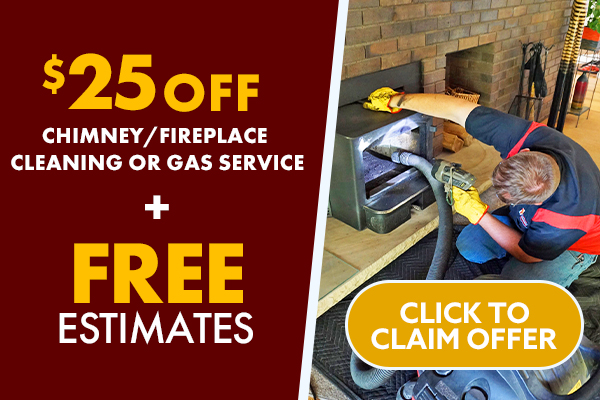FAQ – Pellet Stoves - Pellet Fuel – Pellet Fireplace Inserts
Frequently Asked Questions:
- What are some of the benefits of heating with pellets?
- What are pellets made of?
- Is there much mess if I decide to heat with wood pellets?
- How do I store wood pellets?
- What kind of chimney do I need?
- Are there any differences between types of pellet fuel?
- Are pellet appliances reliable?
- How do pellet stoves work?
- How do I light my pellet stove?
- How much space can I heat with a pellet appliance?
- How do I control the amount of heat?
- How do I remove the ash?
- Is there maintenance required with a pellet appliance?
- Are pellet appliances efficient?
- How much should I expect to pay for a pellet hearth appliance?
If you have other questions, please feel free to Contact us!
Expert Answers!
1 - What are some of the benefits of heating with pellets?
1. Protects the environment. 2. Help control home heating bills. 3. Store four times the amount of pellet fuel in the same space that an equivalent amount of cordwood requires. 4. Installation flexibility. 5. Simple to operate. 6. Creates an automated wood based fire.
Wood pellet manufacturers take ground wood, waste wood, paper, bark and other combustibles and turn them into 3/4? pencil-sized pellets that are uniform in size, shape, moisture, density and energy content.
3 - Is there much mess if I decide to heat with wood pellets?
Pellet stoves and inserts offer a clean and environmentally sound way to heat your home. Pellets are clean to handle and easy to store; no more bugs, bark or dirt brought into your home. And they are a renewable resource!
4 - How do I store wood pellets?
Pellets typically come packaged in 40 pound bags, much like water softener salt. You can store four times the amount of pellet fuel in the same amount of space that cordwood takes up! A winter’s supply of pellets for an average home takes an area about 6' wide x 6' deep x 6' high. Store pellets in any dry area such as the basement, garage, shed or utility room.
5 - What kind of chimney do I need?
Most pellet appliances must be vented with a 3? or 4? Type “L” vent pipe, except for masonry chimney installations or if being connected to a factory built stainless steel chimney system. Type “L” vent pipe can be side-wall vented or vertically vented through the roof, depending on location of the stove and the details of your installation.
6 - Are there any differences between types of pellet fuel?
Yes, a significant difference! There are currently only two grades of wood pellet fuel: premium and standard. The difference between the two is the percentage of ash content. However, there still can be a significant difference between “premium” pellet manufacturers. Look for the highest BTU output and lowest ash content you can find.
7 - Are pellet appliances reliable?
There are several very reliable manufacturers of pellet equipment available today. Warranties from seven years to Limited Lifetime Warranties are not uncommon. Be sure you buy from an established and reputable specialty hearth dealer. Buying from a big box store or inexperienced dealer may cost a few dollars less, but there is a huge difference in quality, performance, reliability, efficiency, heat output, maintenance requirements and product support.
8 - How do pellet stoves work?
Pellets are loaded into a hopper on the top of the appliance. A state-of-the-art circuit board controls the precise amount of fuel that is delivered to a stainless steel burn pot. High pressure air is pulled into the base of this firepot and forced through the burning pellets. This achieves nearly complete combustion of the pellets (usually over 95%) and allows the greatest amount of heat value to be transferred to your home. The pellet fuel leaves an almost powdery, residual ash. The super-heated air is drawn through a series of heat exchange tubes along the top of the firebox. This heat is then transferred into your home via a quiet, variable speed fan.
9 - How do I light my pellet stove?
Most pellet stoves rely on an automatic ignition system to make fire-starting and burning pellets as easy as flipping a switch. A wall thermostat can also be used to control the temperature in the room. Avoid models that require gelled alcohol and must be lit manually.
10 - How much space can I heat with a pellet appliance?
It’s all about BTU’s/hour - the more you have, the more space you will be able to heat. The burn rate of the pellets is adjustable. Powerful pellet heaters will be in the 40,000 – 45,000 BTU/hour range on high. If you don’t want all that heat, simply reduce the feed rate of the fuel. Typically burn rates of stoves are between 8000 – 28,000 BTU/hour for a smaller appliance and 14,000 – 45,000 BTU/hour for a larger appliance. Anywhere from 300 square feet to 2000 square feet of space is being effectively heated with pellet equipment.
11 - How do I control the amount of heat?
The amount of heat from a pellet appliance in controlled by how fast the pellets are being burned (the burn rate) and the speed of the blower fan.
Pellet stoves come equipped with ash pans. A simple handle above the ash pan allows accumulated ashes to be removed from the firebox without opening the door or requiring the fire to go out. Pellet inserts are equipped with a pull out ash pan located beneath the door.
13 - Is there maintenance required with a pellet appliance?
Routine maintenance includes cleaning the stainless steel firepot and heat exchange tubes. Cleaning and sweeping ash into the ash pan, cleaning the exhaust blower and checking for air leaks around doors, glass and the ash pan are other regular maintenance items that must be done.
14 - Are pellet appliances efficient?
Overall efficiency is generally in the 80 – 85% range.
15 - How much should I expect to pay for a pellet hearth appliance?
Or as John Rusking (1819 - 1900) said:
"It is unwise to pay too much, but it is worse to pay too little. When you pay too much, you lose a little money, that is all. When you pay too little, you sometimes lose everything, because the item you purchased was incapable of doing the thing it was bought to do. The common law of business balance prohibits paying a little and getting a lot. It cannot be done. If you deal with the lowest bidder, it is well to add something for the risk you run. And if you do that, you will have enough to pay for something better. There is hardly anything in the world that someone cannot make a little worse and sell a little cheaper, and people who consider the price alone are this man’s lawful prey."
If you have other questions, please feel free to Contact us!








